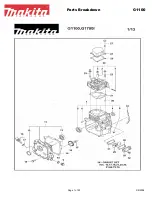
-10-
5.
Making DC Wiring Connections
Follow this procedure to connect the battery cables to the DC input terminals on the inverter. Your
cables should be as short as possible (ideally, less than 10 feet / 3 meters) and large enough to
handle the required current, in accordance with the electrical codes or regulations applicable to
your installation. Cables that are not an adequate gauge (too narrow) or are too long will cause
decreased inverter performance such as poor surge capability, frequent low input voltage
warnings and shutdowns.
J. Connection and Testing
For a quick connection and performance check, please follow these guidelines:
1.
Unpack and inspect the power inverter, check to see that the power switch in the OFF position.
2.
Connect the DC POSITIVE cable to the Positive (POS+) terminal on the battery. Next, connect the
cable to the positive terminal on the inverter.
The connection to the negative (NEG-)
terminal of the Inverter should be the last connection
made. A spark when making this final connection is normal.
3.
Before proceeding further, carefully check that cable you have just connected the positive
terminal of inverter to the positive terminal of the power source.
4.
Connect the cable securely from the negative terminal of inverter to the negative terminal of the
power source.
WARNING!
Do not operate the power inverter without connecting it to ground.
Electrical shock hazard may result.
WARNING!
You may observe a spark when you make this connection. Do not make this
connection in the presence of flammable fumes. Explosion or fire may result.
CAUTION!
Reversed polarity connections will blow a fuse in inverter and may permanently
damage the inverter. Damage caused by a reverse polarity connection is not
covered by our warranty.
WARNING!
Make sure all the DC connections are tight (torque to
9-10 ft-lbs,11.7-13Nm). Loose connections will
overheat and could result in a
fire
hazard.
































